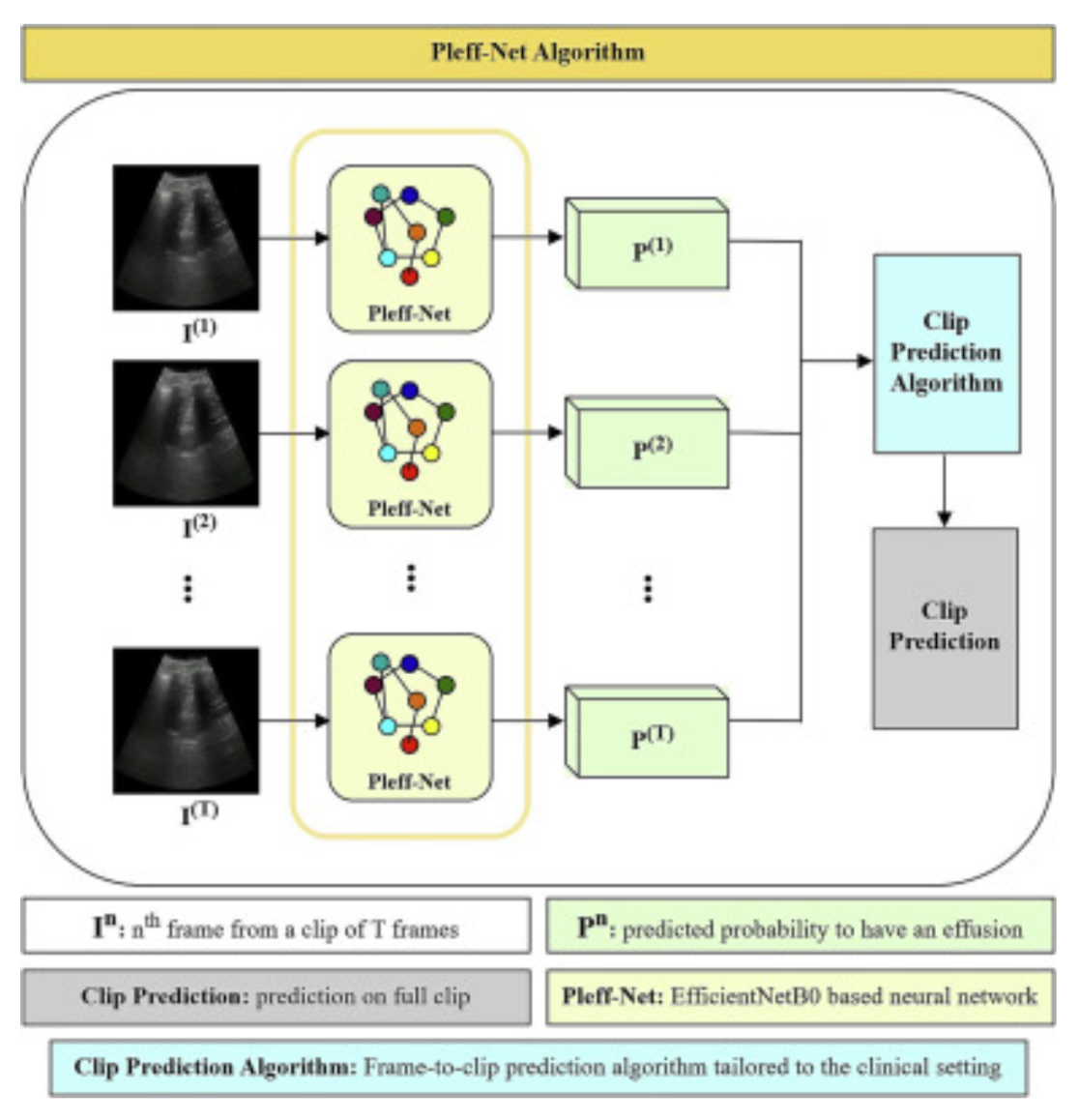Deep Breathe team members have developed a Deep Learning model that demonstrates high diagnostic sensitivity and specificity for detecting pleural effusion - revolutionizing patient care in the point-of-care medical imaging space.

SHARE
TABLE OF CONTENTS
Deep Learning models are transforming medical imaging. Deep Breathe team members have developed a Deep Learning model that demonstrates high diagnostic sensitivity and specificity for detecting pleural effusion - revolutionizing patient care in the point-of-care medical imaging space.
Pleural effusions can result from various disease processes, and their accurate, timely diagnosis is crucial for guiding patient management and treatment decisions. Traditional imaging modalities such as chest radiography (CXR) and computed tomography (CT) have limitations such as low sensitivity rates, are resource-intensive, and expose patients to radiation. In contrast, lung ultrasound (LUS) has emerged as a valuable alternative, offering high sensitivity and specificity, but remains underutilized due to the steep learning curve required for image acquisition and interpretation.
Deep learning (DL) has transformed medical imaging by enabling automated interpretation and bridging expertise gaps, offering a promising solution for pleural effusion diagnosis, especially in low-experience settings. However, like the underutilization of LUS, DL models for ultrasound face limitations due to small datasets and lack of adaptability to diverse clinical contexts. To address these challenges, researchers have developed Pleff-Net (PLeural EFFusion neural NETwork), a DL model designed to detect pleural effusions in LUS images. Unlike traditional models, Pleff-Net is adaptable—its sensitivity and specificity can be tailored based on different clinical scenarios, improving diagnostic relevance.
A retrospective study was conducted at two Canadian tertiary hospitals, evaluating LUS scans from patients with and without pleural effusions. Three models were trained for different diagnostic settings, using a combination of image-level convolutional neural networks and a video-level prediction algorithm, with expert annotations as the reference standard for model validation. The results were impressive as all three models demonstrated at least 0.90 sensitivity and at least 0.89. Pleff-Net's high sensitivity and specificity suggest it outperforms traditional methods in emergency and critical care by reducing missed cases and false alarms in pleural effusion diagnosis.
By tailoring detection parameters to clinical context, Pleff-Net enhances decision-making for emergency physicians, potentially expediting diagnoses and improving patient outcomes. Integrating Pleff-Net into point-of-care ultrasound devices could revolutionize pleural effusion diagnosis by reducing the need for specialized training while ensuring accurate, timely interventions. This integration marks a crucial step in the AI-driven transformation of medical imaging and the democratization of advanced diagnostics in healthcare.
Rushil Chaudhary MD, Jordan Ho MD, Delaney Smith BSc, Saad Hossain, Jaswin Hargun, Blake VanBerlo BESc, Niall Murphy, Ross Prager MD, Kiran Rikhraj MD, Jared Tschirhart MD, Robert Arntfield MD. (2025) Diagnostic accuracy of an automated classifier for the detection of pleural effusion in patients undergoing lung ultrasound. The American Journal of Emergency Medicine. 90, 142-150.https://www.sciencedirect.com/science/article/abs/pii/S0735675725000476?via%3Dihub
SHARE
© 2024, DEEP BREATHE, INC